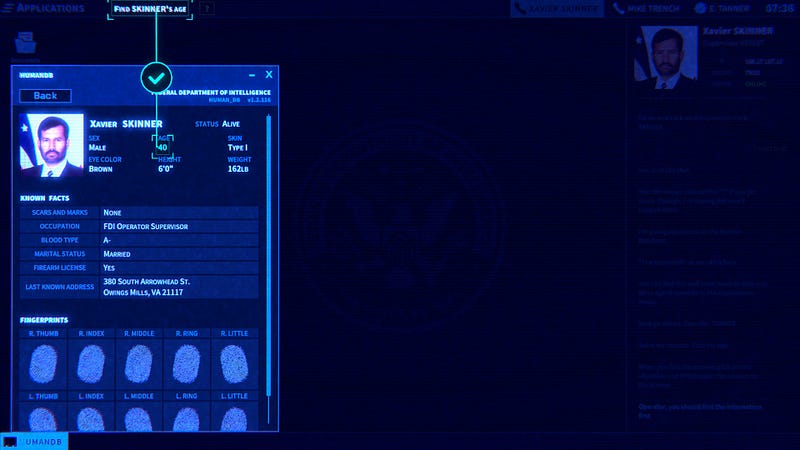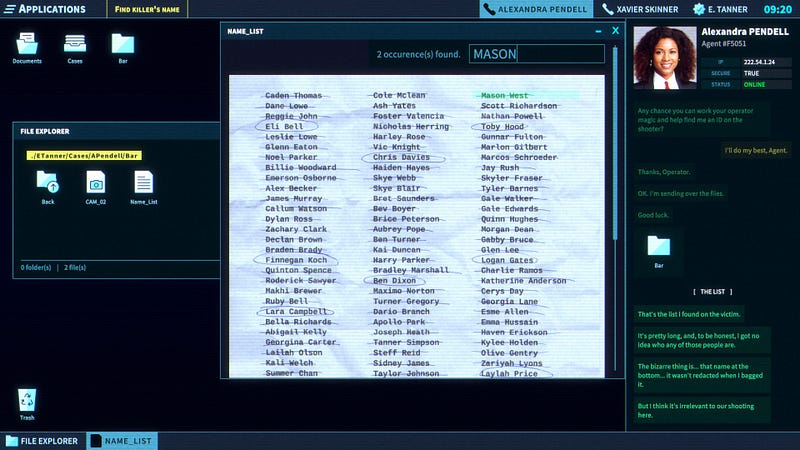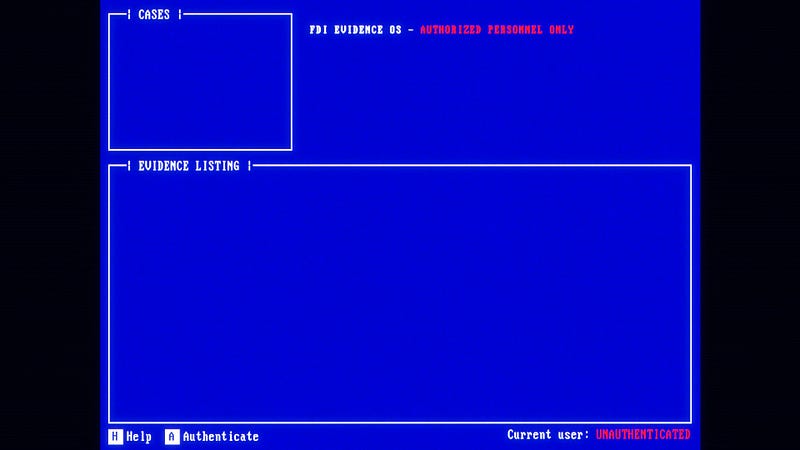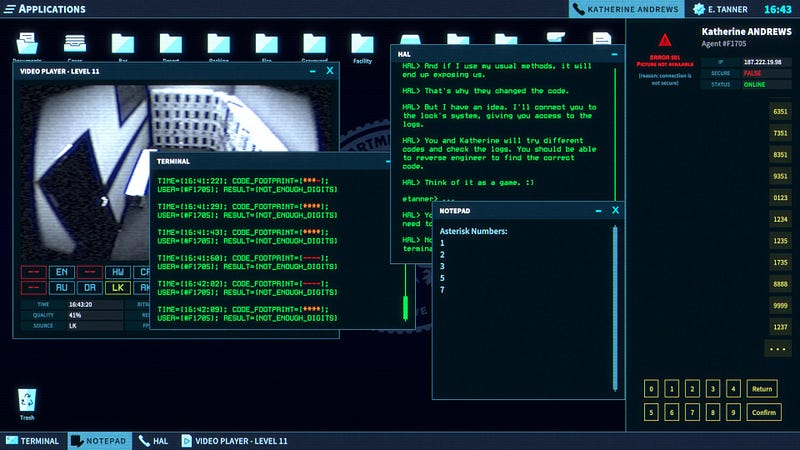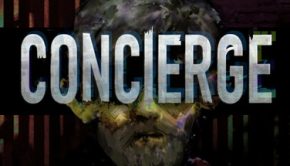The Operator (2024) PC Review
Summary: The Operator is a fun three hours of your time which aims to break free of its desk-bound administrative labour and take you on a stressful (in a good way) journey through corruption and deceit, all the way to the heart of the web that’s being spun around you.
4
FDI, open up!
For whatever reason, solving puzzles, riddles and detective work in general has always been satisfying to me, yet my introversion and ever-dwindling social battery has always kept this from being something I could ever really pursue seriously. Cue The Operator.
The player assumes the role of Evan Tanner, a new agent on his first day at the FDI. Tanner is part of the “Operator Program”, which partners up field agents with data analysts for real-time support. His first day involves assisting a homicide case, the return of an abducted woman… and contact with “HAL,” an elite hacker seeking your partnership, who’s also one of the FDI’s most wanted.
The game takes place at an old computer desk, much like Her Story and Emily Is Away. The technology you’re working with is surprisingly high tech for 1992, but there’s also a short segment that takes place in a more fitting 90s file manager GUI, complete with a lack of mouse control. At the desk, the player has most of their desktop to arrange windows, with active calls docked to the right of the screen. The voice on the other end of the line is accompanied by a text transcript, below which is where you’ll select your responses. The agents in the field frequently send you files to download which neatly add themselves to your desktop.
Like your actual computer, selecting a file opens it in its appropriate software. This is where your software starts getting high-tech, with facial recognition and text search within images. Additional features over a civilian computer include databases on humans and vehicles. These desktop sessions are broken up by out of focus approximations of the character’s vision guided by appropriate audio, which makes for refreshing intermittent breaks away from the harsh blue computer screen.
Most progression through the game involves finding useful or discrepant data in the files you have. In some cases, this is as simple as looking up a name in the database for more info, in other cases you’ll have to snoop around the evidence to pry out more information. A lot of the specialist software is unfortunately only used once, like the camera and sample analysers. This partly comes down to the game’s short length and fast pacing once it really starts to kick off, but it would’ve been nice to see these more than once, especially with all the instructions for the sample analyser. One of the tools you’ll use more often is playing back video feeds, and I have to say that these look really good. They’re appropriately low quality but you can still follow what’s happening in them.
The game makes good use of its short time; it eases you comfortably into the core gameplay loop with a few simple analysis cases which tie into the story. It holds itself together for the most part, before concluding on too vague a note of open-endedness. I would be remiss to let this colour my investment up to then, however — there are many twists and turns amongst the prolonged stretches of anxiety and tension that it would be unfair to let a weak ending dampen how invested I was in the three hours leading up to it.
Just like Emily Is Away, a huge part of the sound design comes from just the clicky keypresses and cheap mouse clicking that accompany your actions. This is all accompanied by general office walla, reminding you that you are still working in an office of many witnesses who could see the suspicious things on your computer. This cacophony of sound is a lovely mix of near and far speech, footsteps and keyboard typing. It definitely sounds like an office.
Every character (for whom it makes sense) is fully voice acted, with strong performances all across the board; Skinner sounds like your boss, Trench like your boss and friend, Pendell as a rookie agent lacking confidence, and Walker as the grizzled veteran with little faith in the operator program. Every voice felt perfectly cast to the character being portrayed.
A lot of its ambience is quite cinematic, quiet solo strings or piano with quiet, muted percussion. At times where the music sits more at the forefront, its saturated electronica (and occasionally guitars) finally seeps through. This is especially notable in HAL’s themes, which are firmly cemented in 80s synth patches with a modern twist, like remakes of 80s cracktro and demoscene programming. Music cues progress organically through making headway in the case, notably when a big discovery is made. The UFO image in particular bears a quiet but fittingly X-Files motif.
On the other hand, the louder and heavier stingers emphasise important story moments like your first interaction with HAL, and they go a long way to making them impactful; days after finishing the game I could still vividly remember opening a certain file and being flashbanged with its contents and accompanying music. These loud jumps contrast the sparse ambience that typically plays while working and are used sparingly, but they’re worth it.
Final Thoughts
The Operator is a fun sci-fi mystery for those short on time, or those daunted by the prospect of spending too long working at a fictional computer desk, let alone your actual one. I felt a little underwhelmed by the underuse of most analytical tools and its unclear ending, but I will always prefer a game that leaves me wanting more over one I just can’t wait to be over and done with.



